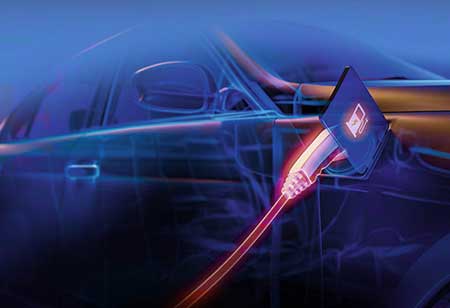THANK YOU FOR SUBSCRIBING
THANK YOU FOR SUBSCRIBING
Be first to read the latest tech news, Industry Leader's Insights, and CIO interviews of medium and large enterprises exclusively from Auto Tech Outlook

By
Auto Tech Outlook | Monday, March 20, 2023
Stay ahead of the industry with exclusive feature stories on the top companies, expert insights and the latest news delivered straight to your inbox. Subscribe today.
Connected, Autonomous, Shared, and Electric (CASE) Vehicles will be the future of automotive. While governments are more focused on EVs, other smart vehicle markets are growing too.
FREMONT, CA: The future of automotive will be connected, autonomous, shared, and electric (CASE) vehicles. Governments are concentrating more on EVs, however, other smart vehicle markets are expanding as well. IT teams find it challenging to track modern vehicles' up to 100 million lines of code, which are largely based on open source. Cybercriminals are interested in the auto business as evidenced by the Tesla hack and Jeep attack. Vehicle designs must comply with the functional safety rules because there is so much reliance on all of this software and hardware.
To lower the risk of software security in connected vehicles, the automobile industry is using both proactive and reactive solutions. Automotive organisations are increasingly using a systematic risk-based strategy regarding preventative measures.
To define cybersecurity goals, identify threats and risks, define security controls and requirements, perform design and code reviews, adhere to best practices for secure software development, and perform testing based on techniques, they are basing their work on the ISO 21434 Cybersecurity Engineering standard. This enables the discovery and correction of problems early in the development lifecycle, before release. Reactive measures are made possible by the fact that connected automobiles have OTA (over-the-air) update capabilities, which let vulnerable software be updated after it has been released.
This solution includes several tasks, such as ongoing cybersecurity monitoring to find weaknesses, vulnerabilities, and new types of attacks; vulnerability analysis to assess the impact of vulnerable components; managing vulnerabilities by addressing the vulnerability through, for example, a patch; and finally, applying the fix to the vulnerable components/vehicles through the over-the-air (OTA) update functionality.
The automobile industry is progressing in the right direction as more standards and regulations emphasise the need for cybersecurity. Organisations must first develop a culture of security and safety and implement pertinent rules, procedures, and processes. To manage aspects like requirements management, change management, configuration management, documentation management, tool management, and competency management, management systems must be built within the organisation.
The development of products is the second area. Many security-related tasks must be completed for particular items following the firm's standards and procedures. The artefacts that are produced as a result of these product-level actions can subsequently be utilised as proof to establish a particular level of assurance for safety and security. The organisation must design templates and rules to assist product teams in producing these artefacts quickly and effectively. The product teams can get help from specialised units, such as functional safety teams and cybersecurity teams.
Several components of an autonomous vehicle must work together smoothly. The ability to perceive surroundings utilising various sensor technologies, such as cameras, lidar, radar, ultrasonic, etc., is the first requirement. Detecting other vehicles and pedestrians is part of this. Moreover, wireless technology like V2X can be employed to obtain a view that is wider than what can be seen by standard sensors. Moreover, GPS and HD maps would be available for pinpointing the precise location of the vehicle. The "brain" that processes sensor input and determines how the vehicle should behave is called the decision logic.
The control systems, often known as safety-critical systems, regulate the vehicle's acceleration, braking, and steering to ensure a safe driving experience. To ensure that an autonomous vehicle can perceive its surroundings, make the right decisions about how to act, and then carry out that behaviour appropriately, all of these components must work together flawlessly (acceleration, braking, steering). To ensure a specific level of confidence for safety and security following best practices and international standards, all of these components must be designed and tested.
The data generated and processed by a car will be a component of a market valued in the trillions of dollars as long as it can be managed with the necessary attention to data protection, privacy, and security. This information is already very beneficial to many different industrial sectors, including fleet management, insurance firms, municipalities, and emergency services. It is also beneficial to the hospitality and entertainment industries, payment services, fuel suppliers, and electricity companies. Several parties are interested in offering vital services and developing data-driven business models based on accurate information from the vehicle and its occupants. For this, not only must the connectivity to each of these players be secure, but it must also be of the highest resilience and the lowest latency, enabling sub-millisecond response times in a moving vehicle, as well as to their cloud-based apps and data processing infrastructure.
However, automobile manufacturers might be interested in the data to improve and transform driving. Car makers are becoming software developers and platform providers because of the significance of this data because whoever controls the connected automobile of the future's data journey will become the next major tech player in the digital economy.
An important strategy for boosting a company's value in the digital economy will be to create digital assets tied to the physical products that it sells by managing the data journey. Without managing the data flows into and out of the automobile, knowing where the traffic originates and ends, and managing the security and performance of the data flows, innovation in automotive data services and mobility services cannot be achieved.
 Copyright © 2025 AutoTech Outlook. All Rights Reserved | Privacy Policy | Subscribe | Sitemap | About us | Feedback Policy | Editorial Policy
Copyright © 2025 AutoTech Outlook. All Rights Reserved | Privacy Policy | Subscribe | Sitemap | About us | Feedback Policy | Editorial Policy 



